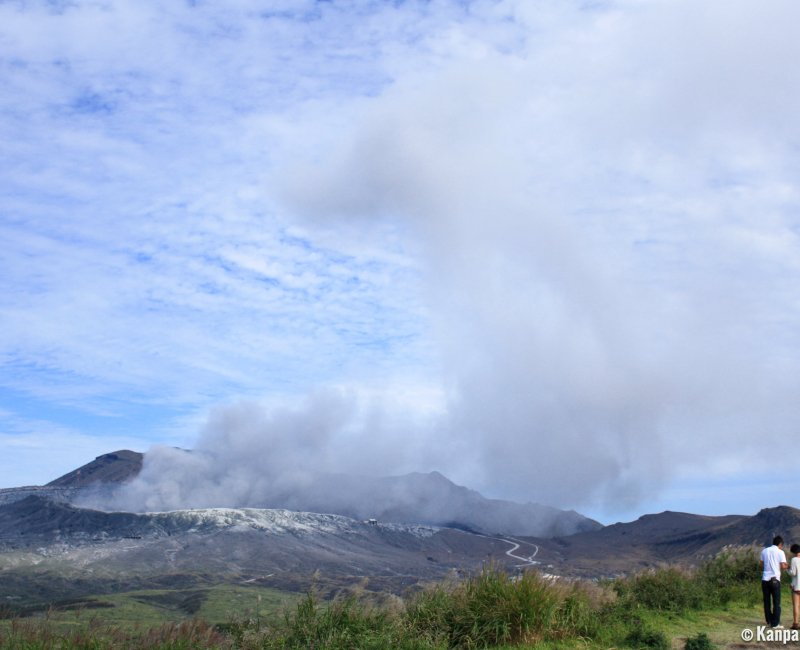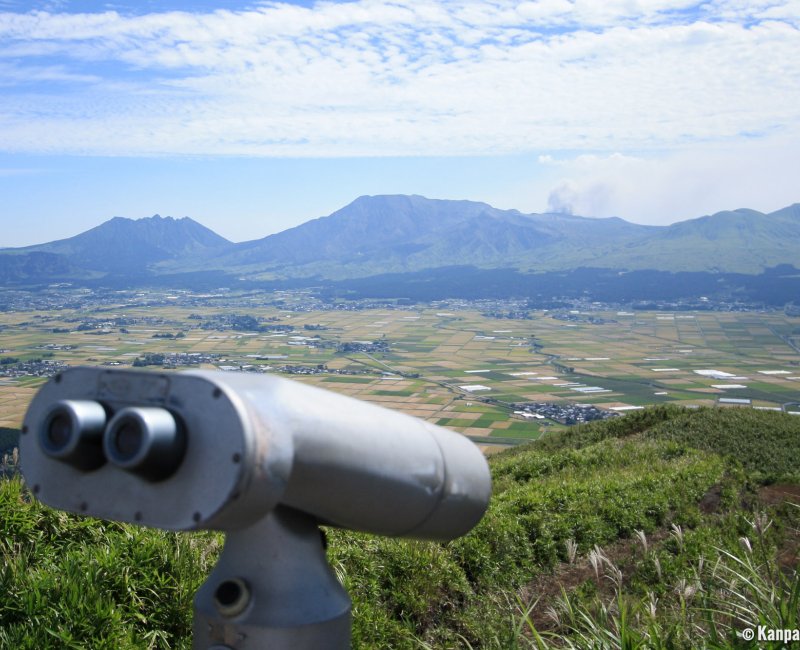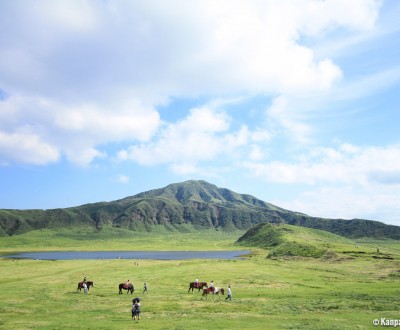Mount Aso
Kyushu’s Lush and Active Volcano
Mount Aso is Japan's biggest active volcano, located in the heart of Aso Kuju National Park in Kumamoto Prefecture on Kyushu Island. Aso-san culminates at 1,592 meters above sea level with a circumference of about 128 kilometers. It is permanently monitored due to the frequent eruptions, which have the access to Mount Aso closed to the public.
Following April 2016 earthquakes in Kumamoto, Mount Aso ropeway is definitely out of service
Mount Aso is actually a volcanic complex that includes about fifteen other volcanic peaks as well as Aso, a city with a population of about 100,000 inhabitants. Its caldera, a vast plateau shaped by previous eruptions, measures 25 km from north to south and 17 km from east to west.
There are 5 main domes:
- Naka-dake: 1,506m, the most active and visited;
- Taka-dake: the highest, with a 1,592m altitude and a 600m diameter crater;
- Neko-dake: 1,408m, considered the oldest one;
- Kijima-dake: 1,321m;
- Eboshi-dake: 1,337m.

Hiking and frequent volcanic eruptions
The caldera was formed between 300,000 and 80,000 years ago after four eruptions, called Aso 1, 2, 3 and 4. The whole complex has experienced more than 160 eruption events since the year 533, as confirmed by documents from that time. In 2014, several explosions, especially in November, required the raising of the alert level. Another eruption occurred on September 14th, 2015. On October 8th, 2016, volcanologists witnessed an explosive eruption on a peak that had been in a sleep status since 1980. The most recent eruption of the main crater happened on October 20, 2021.
Despite some dangers, mostly due to sulfur gas, Mount Aso remains accessible to tourists. In the 1990s, concrete bunkers were built around the Naka-dake crater to allow hikers to shelter in case of eruption. In that case, access would be forbidden to the public up to 2 kilometers around the volcano 🌋. Before scheduling a hike there, it is wise to check for official information related to the volcano’s status.
Please note that the serial earthquakes that impacted Kumamoto in April 2016 have affected the whole site for several years and the cable-car 🚙 to the crater is definitely closed. It is advised to choose hiking trails on other peaks, such as Taka-dake, which offers a magnificent view of the surrounding landscape. Less sporty tourists will have an easier climb at the lower Kishima-dake mount.

Caldera and green grasslands
Another main attraction, the vast grass-covered Kusasenri-ga-hama plain welcomes cows and horses who come here to graze. Horseback riding is possible, but not in winter. On the opposite side is the Aso Volcano Museum and research center, with two real-time cameras 📷 filming inside the crater.
From this high plateau, we can admire one of the most emblematic landscapes of the area: Komezuka, the all-green symmetrical crater, which can be photographed from the two roads crossing the caldera.
For a comprehensive visit, we recommend stopping at one of the hot springs, such as Akamisu, Aso-Uchinomaki, Jigoku, Tarutama or Yunotani-Aso.

